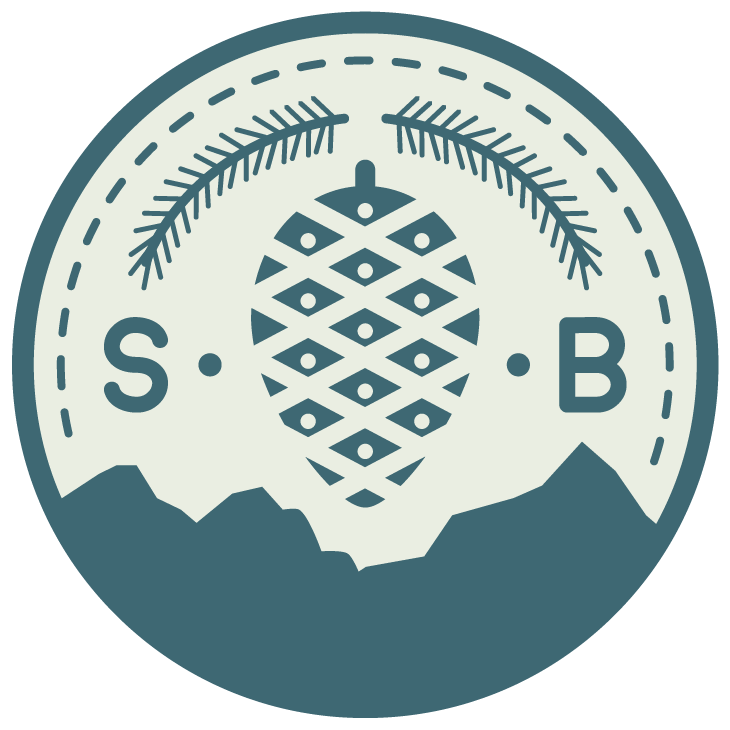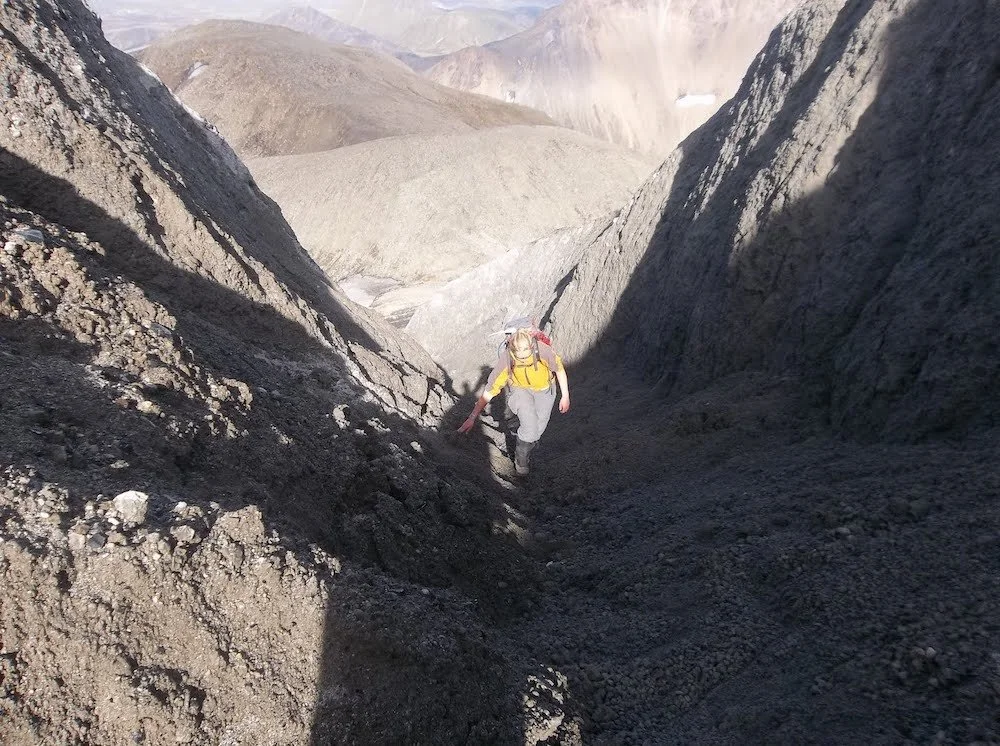Hiking up Hábarmur
Hábarmur is the mountain we never meant to climb. Our ambitions were set on Torfajökull, a small glacier southwest of Eldgjá. We drove for a couple of hours until we arrived at Lake, and in true Icelandic fashion, just started walking with only a GPS (and Ranger Róbert) as our guide. As I mentioned before, Icelanders don’t do trails, but there were some small paths created by years of sheep traffic if we wanted to create the illusion in our heads that we were on some type of high-traffic hiking path with easy access to help if something were to go wrong (how cute).
We hiked up and over a ridge and down into a valley filled with electric greens. Glacial melt shot out tendrils of water - all lined with very bright moss - until they converged in an explosion of vitality on the valley floor. Small pieces of lustrous obsidian occasionally littered the ground, probably from Katla’s last major eruption.
We began walking up Hábarmur proper - or what we thought was Torfajökull proper - and the combination of physical exertion and constant vigilance in regard to safe footing was exhausting. We eventually arrived at a small dip between ridges where a huge wall of glacial ice clung to the mountain like a sentinel, waiting for us.
We stood around for a bit, wondering what to do.
Róbert basically ran up this vertical boulder scree and yelled, “It’s okay!” We just stared. He bounded back down and asked if we’d rather try the snow instead. Yes. He picked up a sharp, flat stone to use as a spade and carved out footholds for us in the steep snowbank. My boots were shit and I couldn’t kick in any myself.
Once we stepped off of the snow and back onto gravel, we were surprised to find that it wasn’t gravel, but just a thin layer of mud on top of glacial ice. There were gaping crevasses and holes all around us. At this point, I put all of my trust in Róbert, who had been a farmer in this area for 40 years before becoming a ranger.
“This was one of the most exciting, and probably most dangerous, scrambles of my life.”
He started climbing up the small canyon of pumice ahead of us, using massive obsidian boulders as hand and footholds, turned back, and shouted for us to follow. This was one of the most exciting, and probably most dangerous, scrambles of my life. The pumice actually lay on a thick layer of glacial ice with the whispering of melt streams flowing down it, turning it into loose mud.
It was very difficult to find solid footing because the pumice was mush and the obsidian was so smooth. Every handhold was a one-off, so everyone had to find their own way. At one point I looked back to check on a team member to find that the place I was just standing was no more than a thin layer of mud on six inches of ice with a gaping hole to the underworld and beyond underneath. I turned back around and walked into the sun with one hand over my eyes.
The summit view, as is almost any view in Iceland, was a transformational experience. Landmannalaugar was fully visible in the distance. Torfasjökull, the mountain we thought we were climbing, loomed directly in front of us with rippling glacial ice that had trapped the ash of thousands of years of eruptions, memorialized in thin black layers. A small mountain had a pale green tint to it from some type of strange oxidation. The surface of the summit was completely covered with glassy obsidian, some pieces too large to move. Anyone would be safe from the Others up here.
I used enough adrenaline for a week on that hike, and the trip back was a blur of exhaustion. I would never have a proper weekend’s rest in Iceland as long as I had friends like Róbert. ◉
Written by Seth Barham










